
Plans for ultra-lightweight, collapsible, multi-cell tetrahedral kites

Plans for ultra-lightweight, collapsible, multi-cell
tetrahedral kites

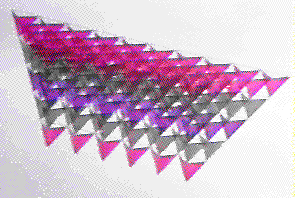 This is the largest TetraLite kite so far, and was built
by TetraLite Kites. It has 110 cells with a total span of just over 10 feet.
It collapses to a 5-foot equilateral triangle about 5 and 1/2 inches thick.
This picture was taken on its first flight on September 13, 1997. Wind speed
was variable from 8 to 12mph during this flight -- much stronger than needed
or wanted! It handled quite well and launching and landing were easier than
we had expected. It is recommended that those new to TetraLite Kites
start with a more manageable size (7 to 22 cells) in order to get the feel
for flying them before attempting larger
models.
This is the largest TetraLite kite so far, and was built
by TetraLite Kites. It has 110 cells with a total span of just over 10 feet.
It collapses to a 5-foot equilateral triangle about 5 and 1/2 inches thick.
This picture was taken on its first flight on September 13, 1997. Wind speed
was variable from 8 to 12mph during this flight -- much stronger than needed
or wanted! It handled quite well and launching and landing were easier than
we had expected. It is recommended that those new to TetraLite Kites
start with a more manageable size (7 to 22 cells) in order to get the feel
for flying them before attempting larger
models.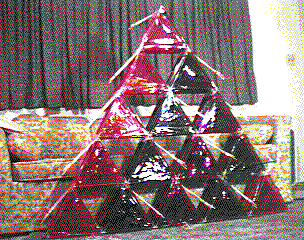
Pictured on the right is the 110-cell TetraLite kite collapsed and leaning
against my seven-foot couch. The overall size is a 5-foot equilateral triangle
about 5 and 1/2 inches thick.
Below (left to right, top to bottom): Landing the 110-cell TetraLite, view from behind and right, view from directly behind, view from front with the ground crew (my friend, Mary) standing behind. First flight of the 110-cell TetraLite kite was on Saturday, September 13, 1997 when the pictures below were taken.
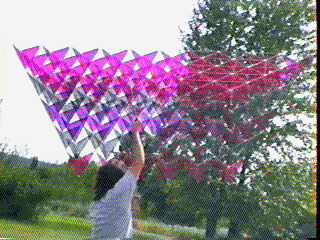 |
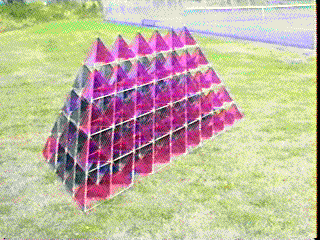 |
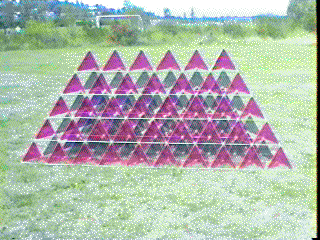 |
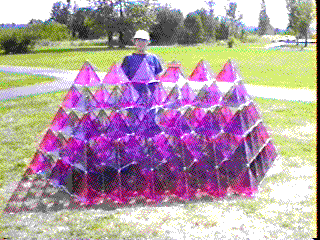 |
Construction of the 110-cell TetraLite kite:
| This picture shows almost 700 sticks being dried after treating the ends with a wood finishing product. The 110-cell kite requires 660 1-foot sticks (6 times the number of cells). This treatment is not necessarily needed -- the assembly manual explains these details. Yes, it's my kitchen! | 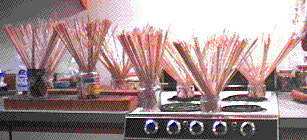 |
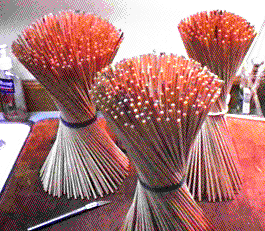 |
After the above picture was taken I discovered an easier and better way to keep the stick ends apart while the wood finish dries. By putting a strong rubber band around the bundles of sticks and then twisting and squashing the bundles down the ends get completely separated from one another. No two stick ends are touching (just under 700 sticks in these three bundles) and they stand up by themselves. If I need to dip the ends again for a thicker coat the bundles can be straightened up by twisting back in the other direction, dipped and spread out again. Much neater and easier than using jars and cans. |
| The completed 110-cell frame is shown in this picture propped up on a small box. The framework is positioned such that it is resting on the forward-most spines. The widest part (wingspan) of the frame is at the top of these pictures. This is the upper rear of the kite while flying. | 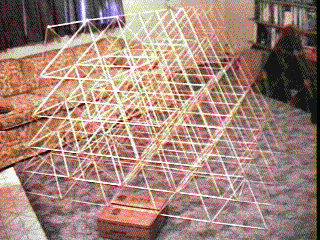 |
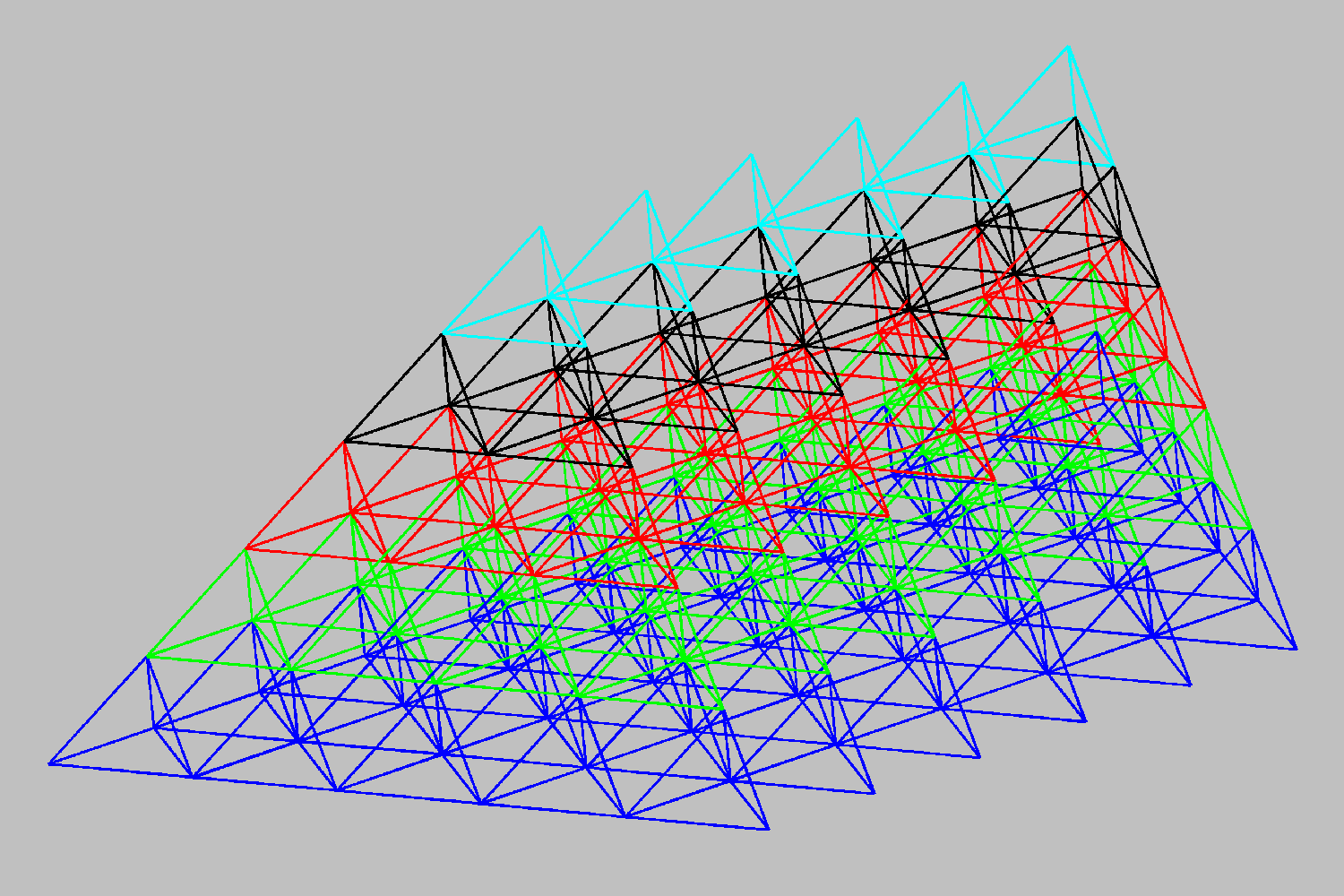 |
This wireframe drawing shows the structure of the 110-cell framework resting on the bases of the rear-most cells (blue). The next layer towards the front (top in diagram) is green, then red, black and cyan (forward-most). |